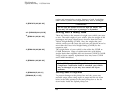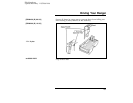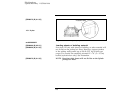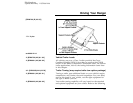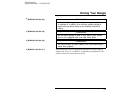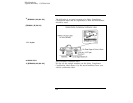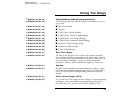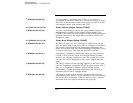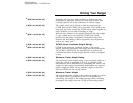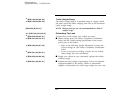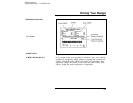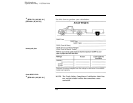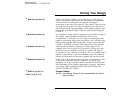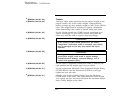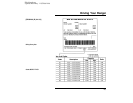
196
*
[DR30650(ALL)08/95]
It is important to remember that GVW is not a limit or a
specification. If an owner loads up a vehicle and weighs it, that’s
the GVW at that moment. If the owner piles on more of a load
and weighs it again, that becomes the GVW.
%
*
[DR30701(ALL)03/91]
Gross Vehicle Weight Rating (GVWR)
*
[DR30750(ALL)10/94]
To avoid overloading a vehicle, the owner should observe the
manufacturer’s specified Gross Vehicle Weight Rating. The
GVWR is the maximum total weight of base vehicle, passengers,
optional components and cargo that a particular vehicle was
designed to carry.
%
*
[DR30801(ALL)01/93]
Gross Axle Weight Rating (GAWR)
*
[DR30850(ALL)03/91]
We have all seen a car or a truck that is loaded down in the
rear and riding high in the front. This is a dangerous condition
that usually means that the rear suspension components are
under severe strain and that vehicle handling is impaired. There
is more to carrying a load than just payload or GVWR.
*
[DR30901(ALL)03/91]
Your Safety Compliance Certification Label not only gives the
GVWR, it also gives the Gross Axle Weight Rating (GAWR)
which is the carrying capacity for each axle system. For trucks,
the rear axle will be designed to carry more weight than the
front.
*
[DR30950(ALL)06/92]
The rating is based on the carrying capacity of the lowest rated
axle and suspension component as well as other factors. This is
why it’s so important to observe vehicle loading ratings.
Overloading a vehicle punishes components and can lead to
shortened service life or outright failure.
*
[DR31001(ALL)06/92]
The capacity of the tires is included as part of the axle and
suspension system, which is to be considered when determining
the lowest rated component. Tires are rated to carry a specific
maximum load at a specific maximum tire pressure.
File:10undrr.ex
Update:Wed May 1 13:52:06 1996



